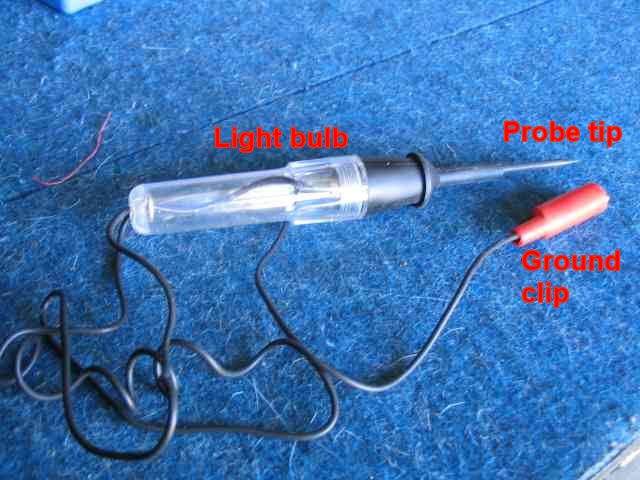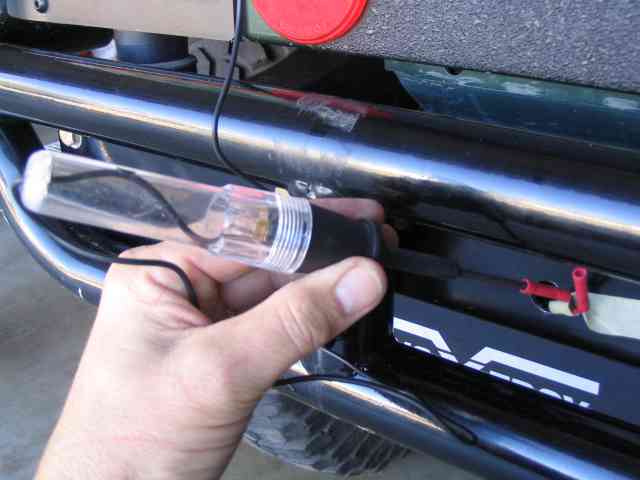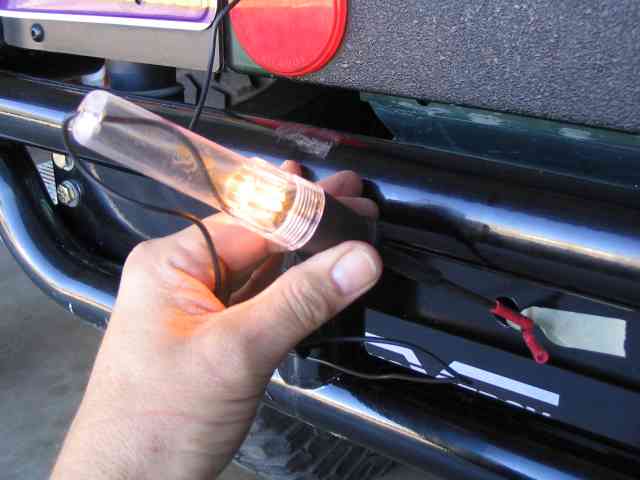Some folks pick up electrical stuff pretty easy…..for others, trying to figure out if the socket or the bulb is bad is extremely difficult. If you are in the latter group and you haven’t spent $5 for a voltage test light, it might just be the thing you need to help you with those basic electrical projects you may have been shying away from. What is a voltage test light? It is nothing more than a light bulb mounted into something that looks like a sharply pointed screwdriver….and so that you don’t think it is a screwdriver, they attach a wire, with an alligator clip, to the end of the handle.

A picture is worth a thousand words so here is your picture! It is a very simple device that can make automotive electrical troubleshooting easier to perform. The concept is very easy. You attach the ground clip to a clean chassis ground connection. When I say clean, I mean it is not painted or powder coated or covered in rust. A clean bolt head or screw works well. Be aware that some times you may find what appears to be a clean connection point but it is isolated from chassis ground (the negative terminal of the vehicle’s battery is connected to the vehicle’s chassis and so it is called chassis ground). Once the ground clip is connected to chassis ground, you simply probe the wire or connector with the probe tip. If the wire or connector has +12V on it, the light bulb in the handle will illuminate

The two connectors shown at the right side of the picture provide power to some LED backup lights. Although I know the color code for the wires, it is possible that I forgot which wire was the positive wire and which one was the negative (ground). After attaching the alligator clip to a clean ground (I used the tail gate latch pin), I probe one of the connectors…..nothing.

Switching the probe tip to the other connector produces a glowing light bulb in the test light’s handle. This connector has +12V on it. Pretty simple way to find +12V on a wire or connector pin. The probe tip is sharp enough that you can actually pierce the insulation on a wire and make contact with the copper wire.
One thing you should always do when using the test light is to verify your ground is good. To do this, attach the alligator clip to your clean chassis ground. Then touch the probe tip to a known good point that has +12V on it. By doing this, you are verifying that the ground connection for your test light is good and it also double checks the light bulb in the handle.
Another thing to be aware of is the probe itself. Be careful when poking with the tip as it is possible that you might touch a +12V wire and something nearby that is a chassis ground. Doing this will cause some arcs and sparcs at the probe’s tip which is NOT a good thing to happen. Best case, you will blow a fuse….worse case, you might melt a wire or burn a connector pin. So be careful and precisely place the probe tip where you want it.
